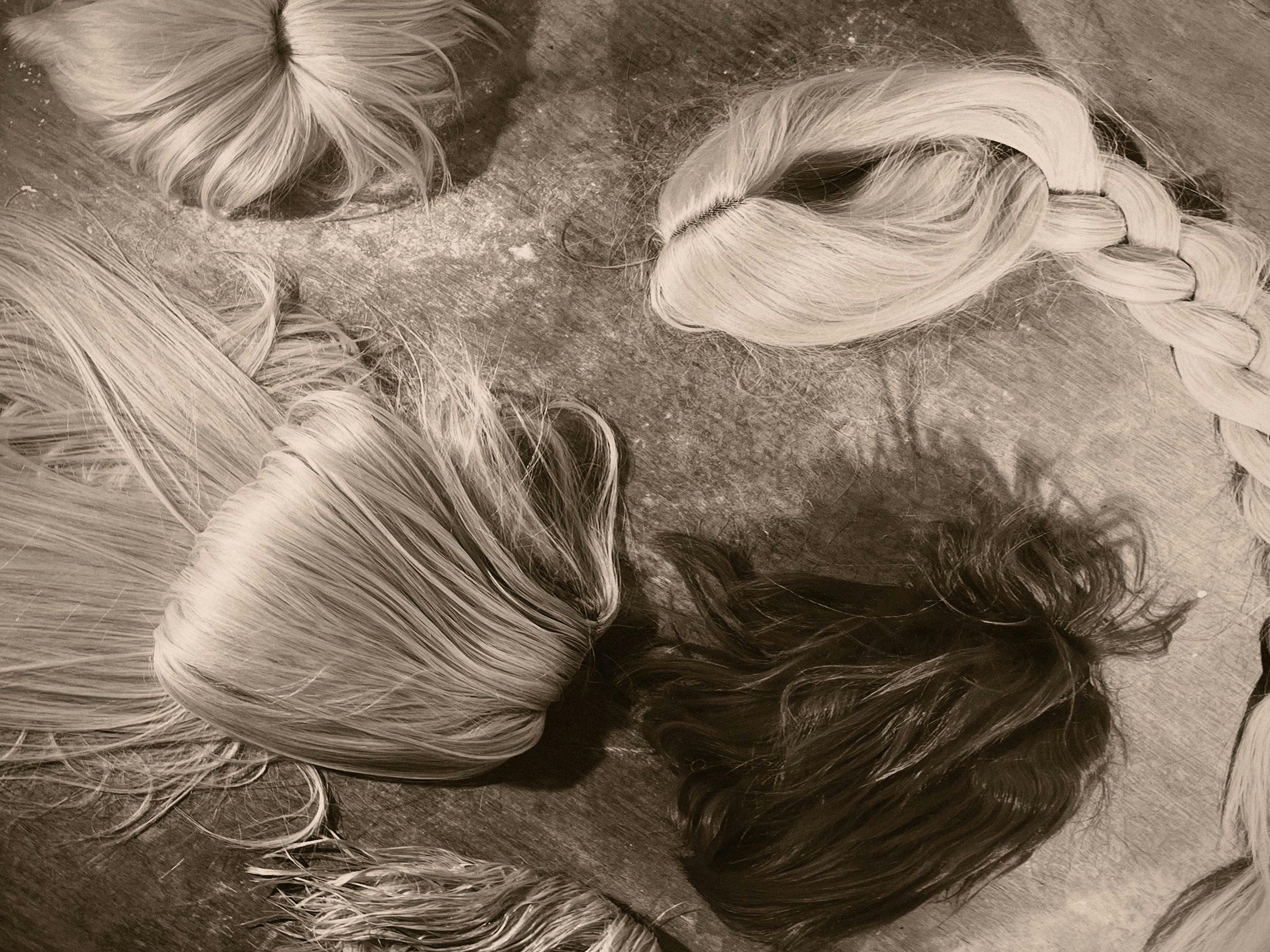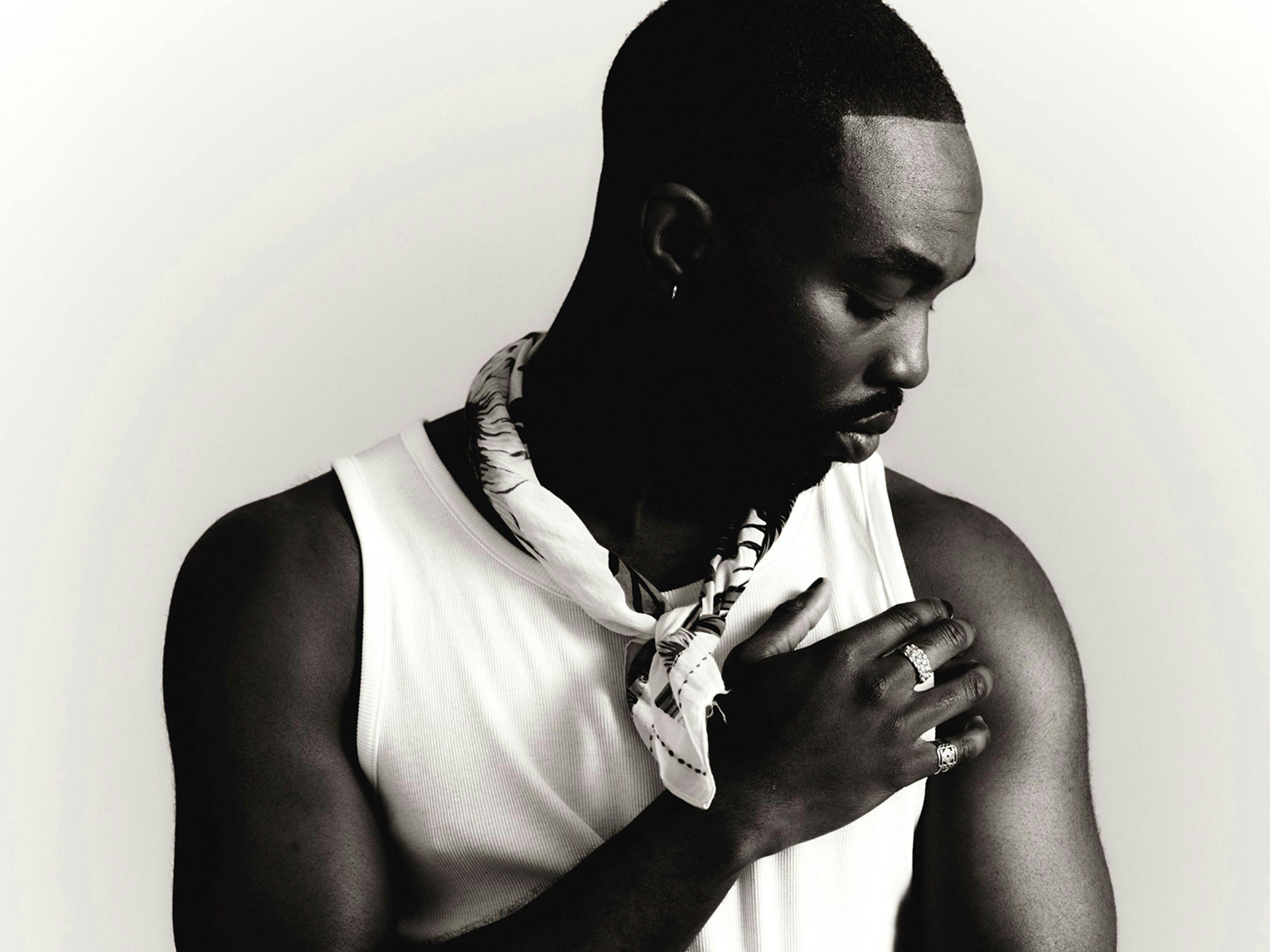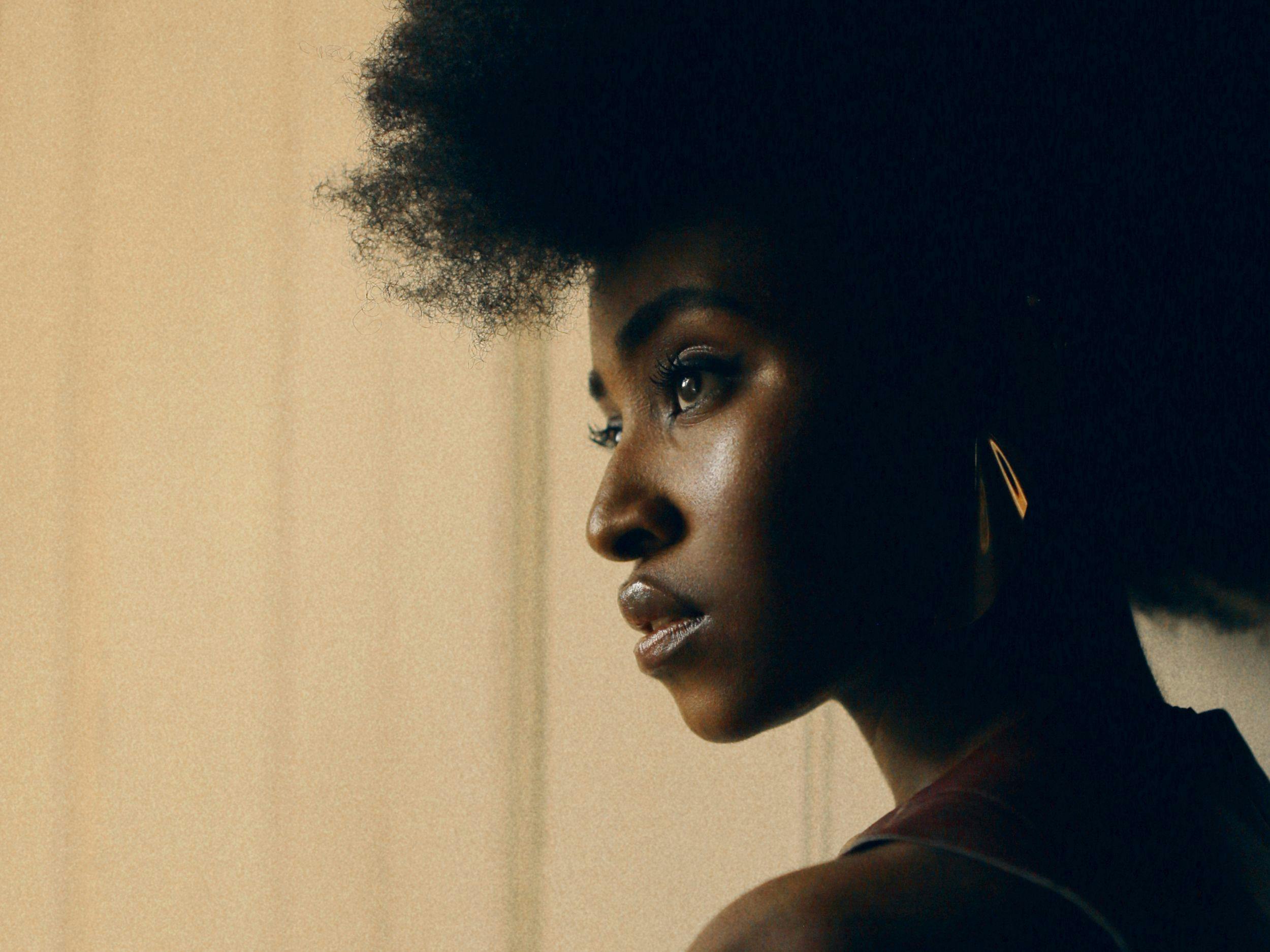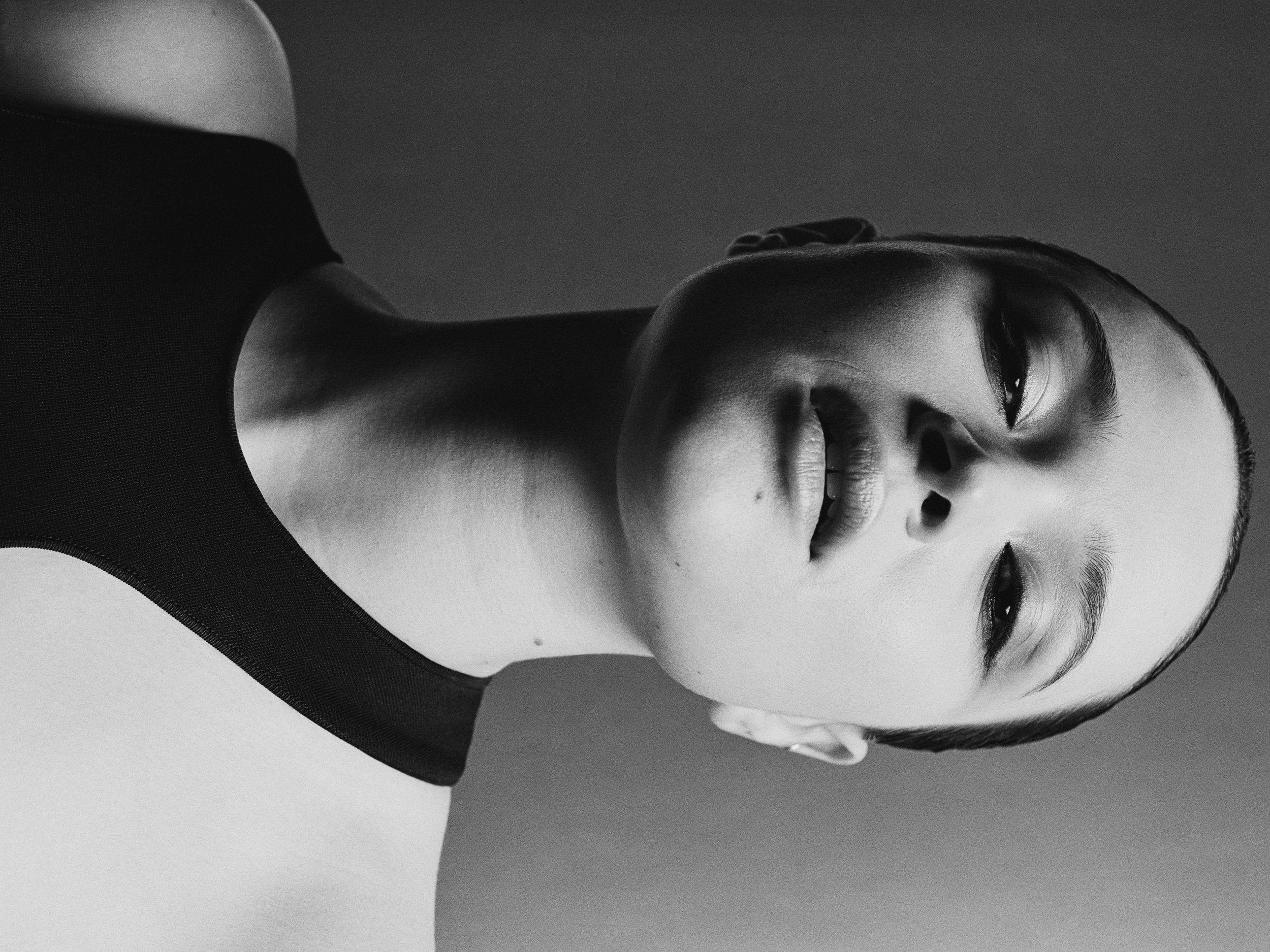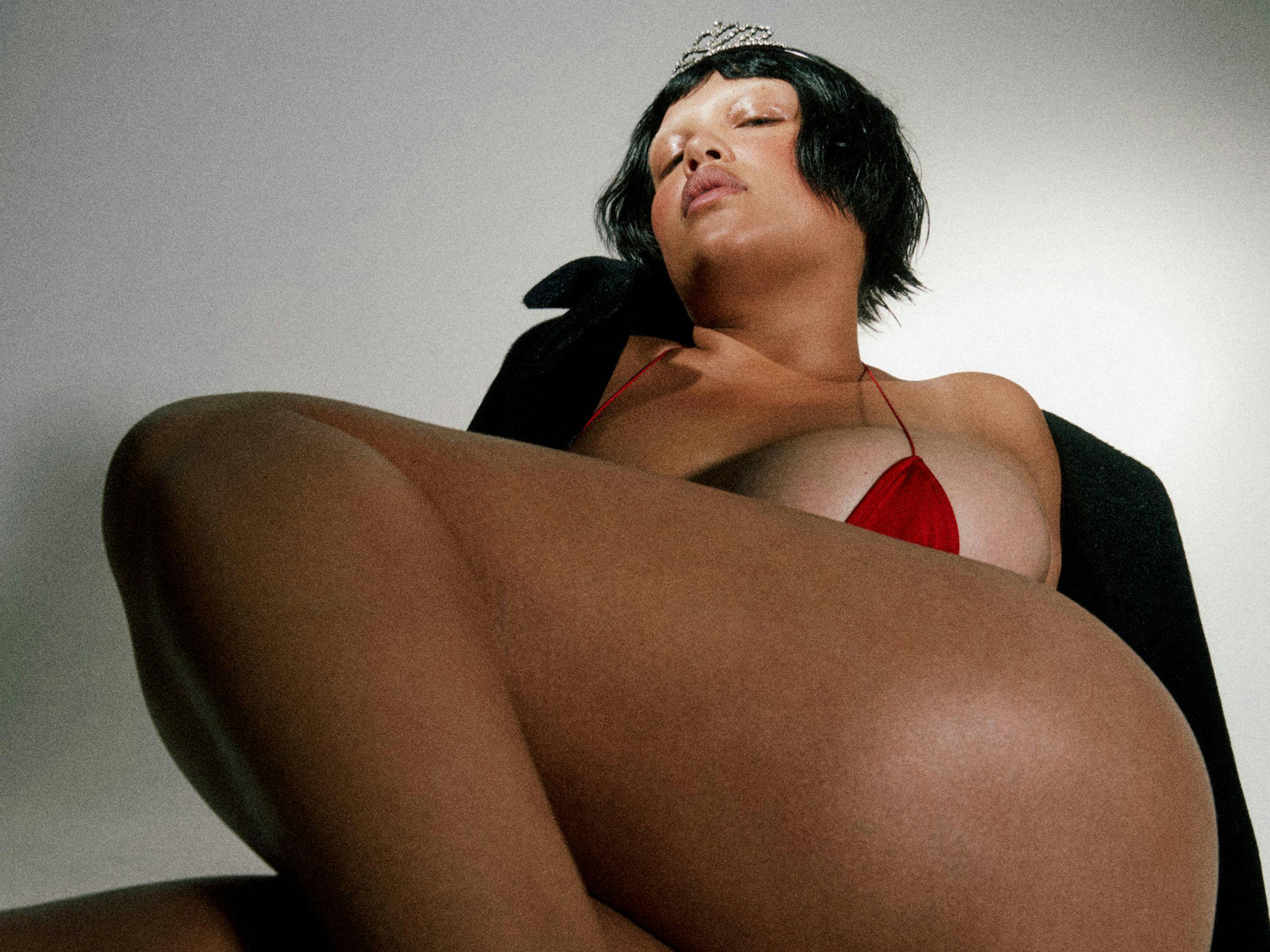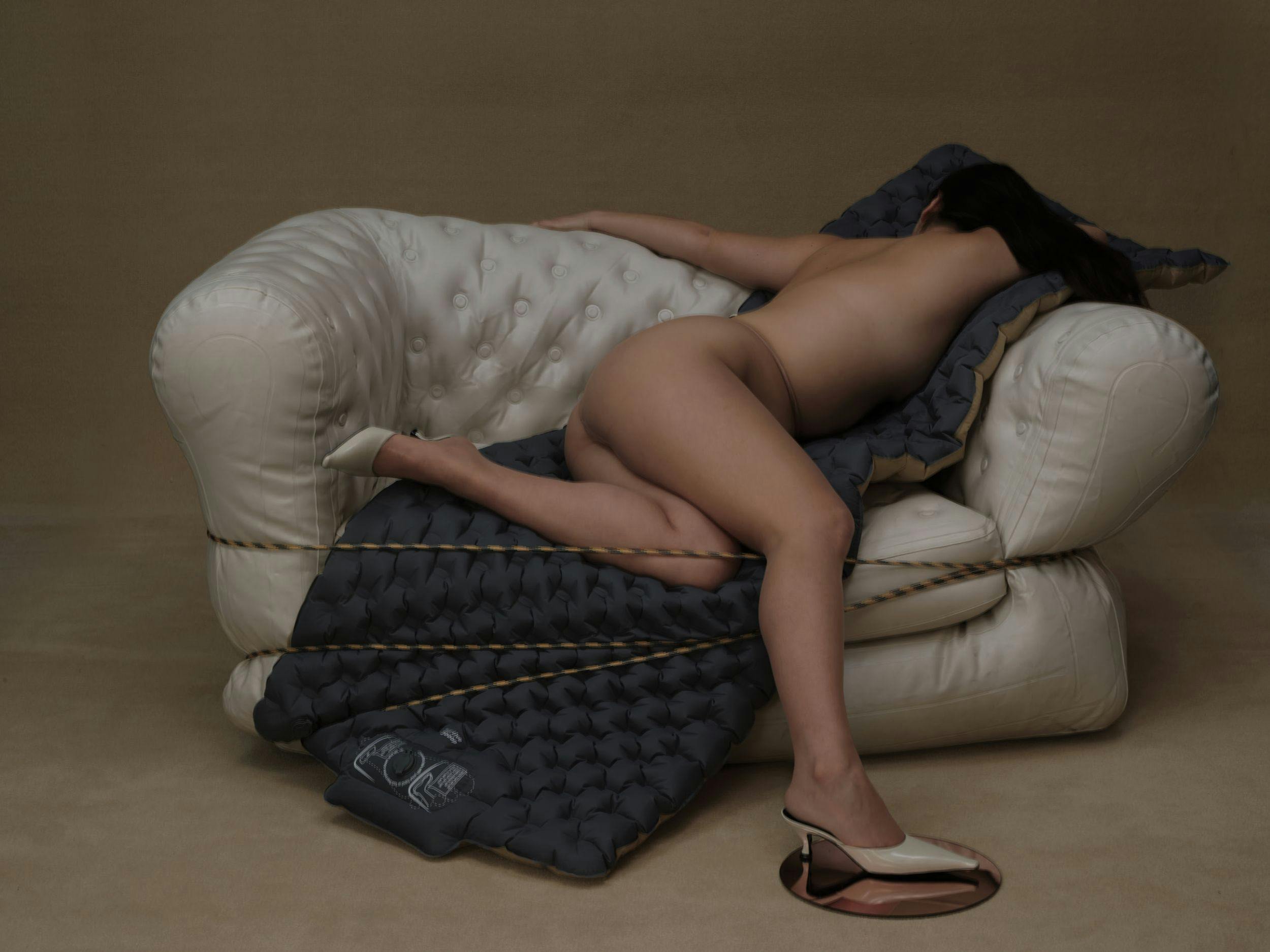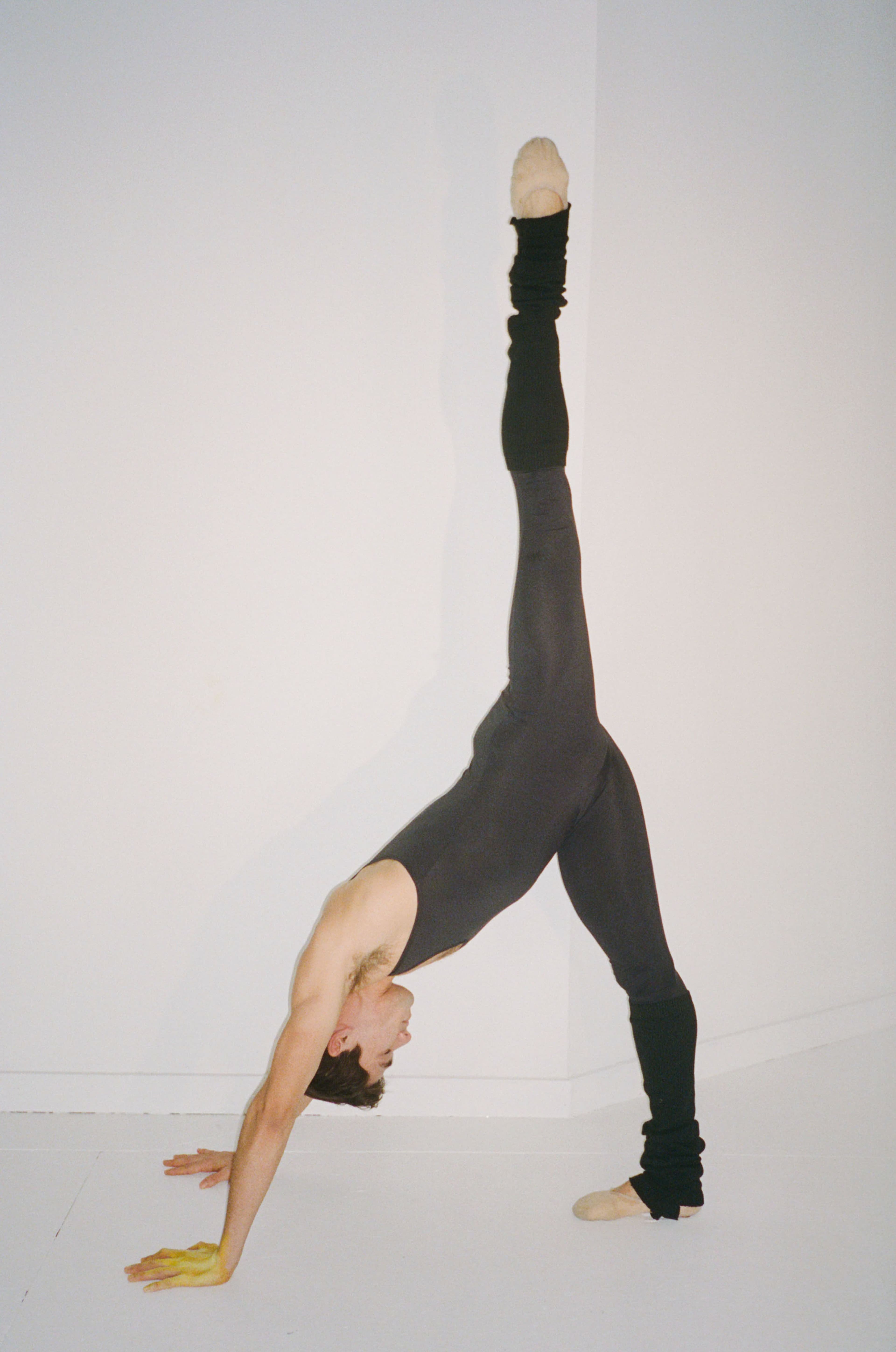
Furlan wears all clothing throughout, talent’s own
Herencia: Jovani Furlan and Nicole Della Costa
The dozens of countries that comprise Latin America stretch over six thousand miles across the Western Hemisphere, from the border city of Tijuana to the southern town of Ushuaia, facing Antarctica. The region’s culture and history are even vaster, with the influence of Indigenous and Pre-Colombian civilizations continuing through centuries of colonization, decades of recent political and economic change, and a newfound flourishing of social justice movements sweeping across the continent. With that rich legacy, Latinx artists are responsible for an abundance of creative variety in film, literature, design, dance, music, fashion, architecture, and the fine arts. As Hispanic Heritage Month comes to a close, photographer Andrés Altamirano and stylist Carolina Orrico share a project celebrating six such talents, reflecting the breadth and depth of the herencia—or inheritance—that informs their work today.
Artist: Jovani Furlan
Medium: dance
Place of Origin: Brazil
Standing on a stage under hot lights in a big city is, for many performers, a distant dream they hold from the time they’re very young. For Jovani Furlan, growing up in Joinville, Brazil, that dream felt even especially remote. However, as if predestined, his journey to Lincoln Center, where he is now a principal dancer at New York City Ballet, was shaped by chance-defying risks and propelled by a kind of assurance that this is what he was meant for.
The path to a top position at one of the world’s leading dance companies began for Furlan in 2004, when he was eleven. Moscow’s famed Bolshoi Theatre happens to run a school in Furlan’s hometown and regularly recruits students from public schools. Furlan initially had little interest, but his grandmother pushed him to audition. “My grandma knew [recruiters] were going to be there,“ he recalls. “She was like, ’You should try it out. You have talents. You love dancing at family parties’—which I did.“
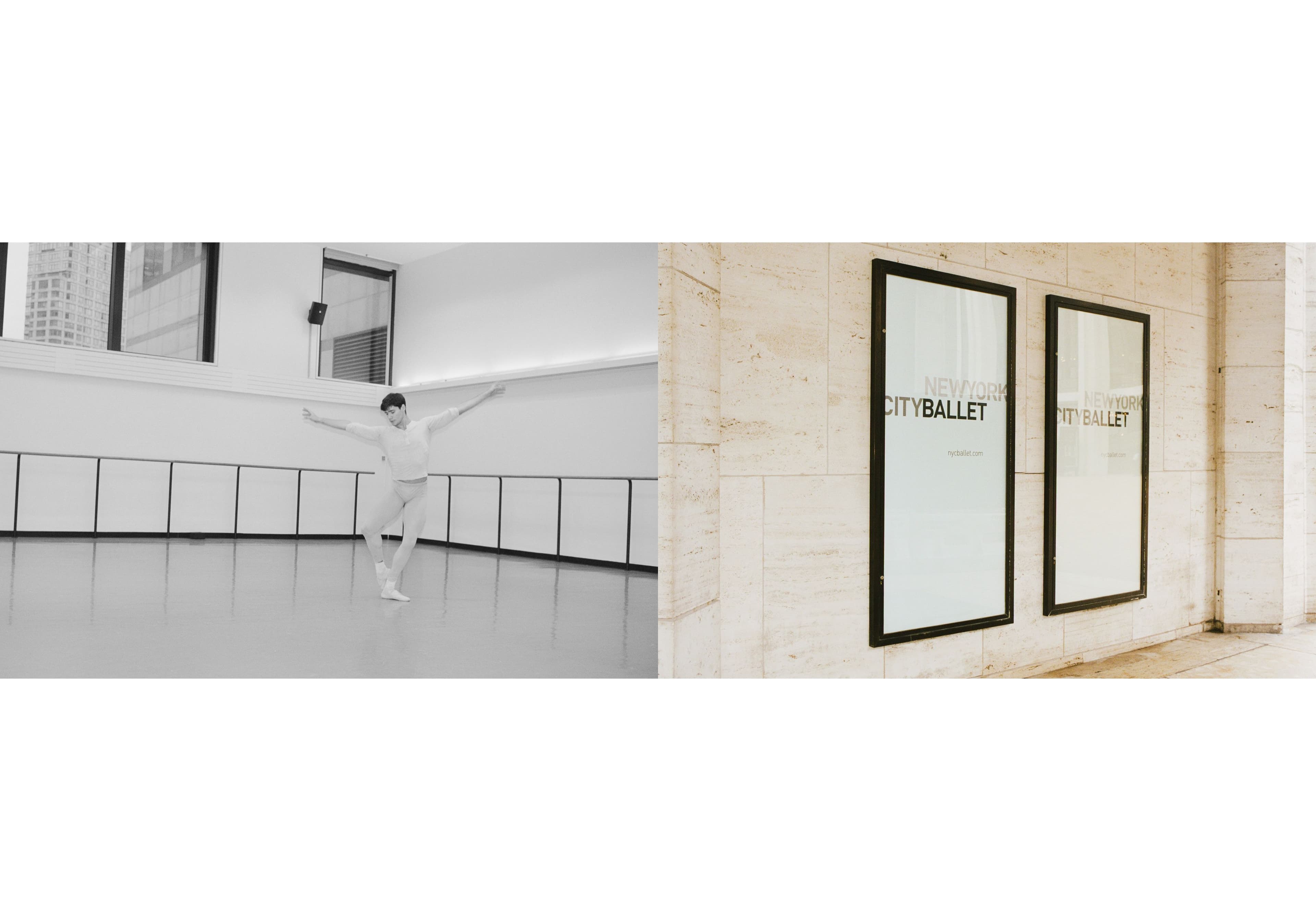
His training at the Bolshoi Theatre Ballet School, however, was a far cry from dancing at family get-togethers. Although neither he nor his grandmother could imagine what he was getting into, Furlan was about to begin pursuit of a rarefied and demanding art form. To this day, he remains grateful for the coincidence that he was born and raised in the only city in the world outside Russia where the Bolshoi has a school. He remembers seven years of military-style drills and countless hours of class. But eventually, all that hard work started to pay off.
A few years into his training, Furlan realized that ballet could be a profession. With the rise of social media, he saw clips on YouTube of dancers performing for audiences and thought he could do it too. “That’s when I started dreaming and thinking, ’Okay, I want to do this,’“ he recalls. “I realized I have talent. The teachers inspired me very much. They made me believe in myself.“ It wasn’t long after that Furlan began thinking about, planning, and practicing to come to the United States.
As with much of his career, Furlan’s move to the United States came about organically. He was seventeen when he received a scholarship to learn with Miami City Ballet, a leap he was completely ready to take. “I went all in and I felt ready. I felt good,“ he says. It was even luckier for him that he joined a company with over a dozen other Brazilian dancers in Miami, a melting pot where he could be embraced by a community. “You move to a foreign country between the ages of fifteen and eighteen and get to live with everyone [and you’re] just happy and excited,“ he continues. “It’s such a fun adventure to do at that age.“
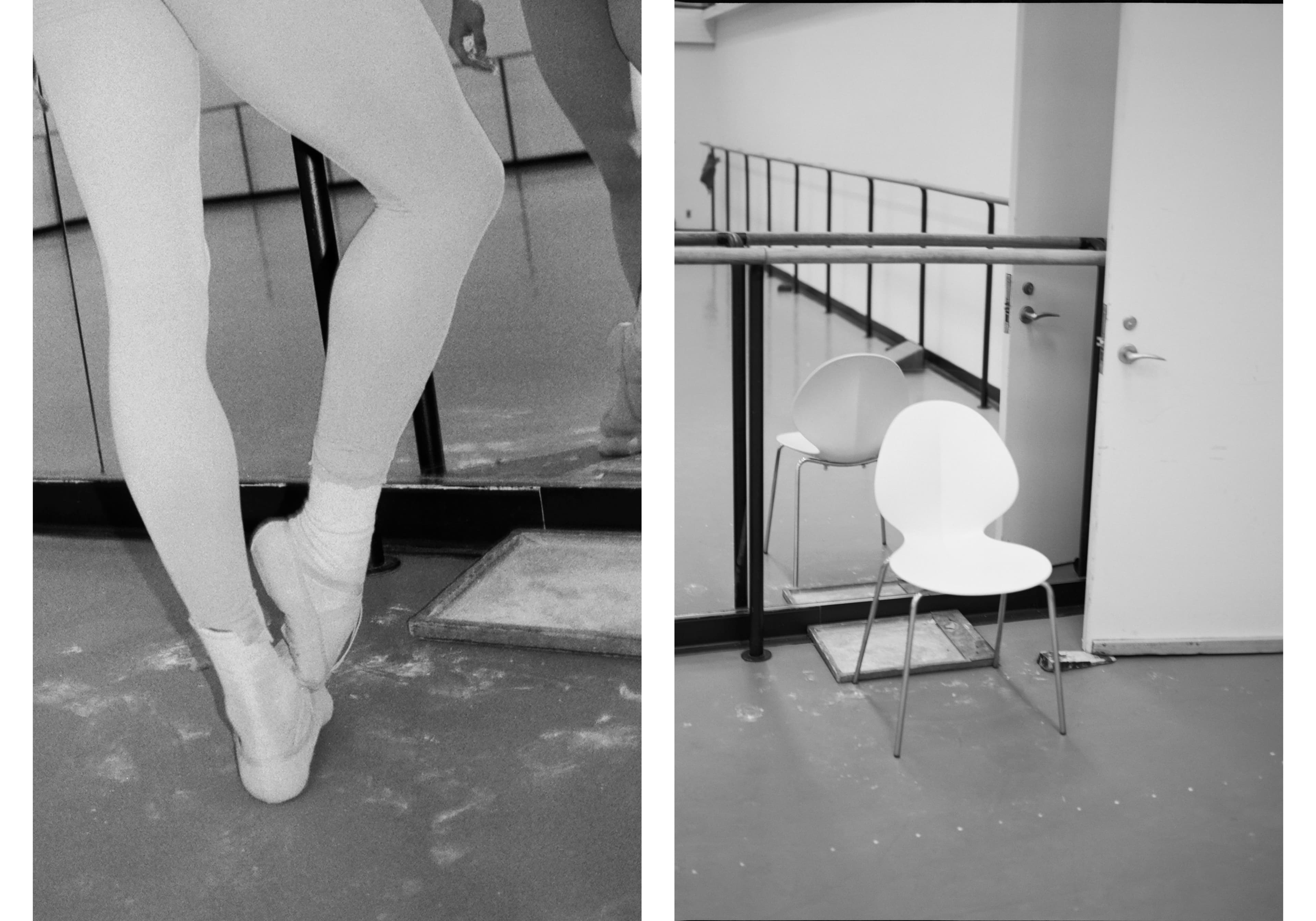
Nine years into Furlan’s tenure at Miami City Ballet, New York City Ballet began a transition after a few of the company’s male principal dancers had misconduct allegations filed against them. Furlan sensed it was time for a change, saw a window of opportunity, and reached out for it. Like Miami City Ballet, New York City Ballet is a Balanchine company, but rarely offers positions to dancers with no experience at its affiliated School of American Ballet. One day, Furlan sent an email to Justin Peck, City Ballet’s resident choreographer, and mentioned that if there was ever a chance to audition, he would love the opportunity. “I sent this email on Friday, they responded to me on Sunday,“ Furlan recalls. “And then on Thursday came an audition. The following Sunday, I got the job.“ He landed his spot in record time, in more ways than one, as it had been twelve years since anyone from outside the School of American Ballet had joined City Ballet. He admits that over the course of his career, it’s been easy to see how “all these choices were made for me. This was the first time that I actually made a decision for myself and I went after it. It’s very cool.“
Since the pandemic, Furlan has been thinking a lot about what he might do when dancing is no longer an option. He’s not afraid to face the fact that, because of the physical demands of the job, he won’t do it forever. While locked down at home, he doubled down on his own entrepreneurship, designing and handmaking dancewear that he now sells through Furlan Dancewear. He’s also considering going back to school, revealing that “before I wanted to be a ballet dancer, I wanted to be a psychologist. I want to start studying for that and then envelop that with dancing.“ As physical as it is, ballet is also known for being mentally draining and emotionally consuming, demanding in a way only those who have experienced it will understand. “I struggle with that myself so much,“ Furlan acknowledges. “It’s very important to have professionals that come from the field because it’s such a specific environment you’re in.”
Today, Furlan continues to perform on stage in New York and across the world, bringing the art form to as large an audience as possible. He doesn’t think of his dancing as all or nothing—it’s a step in a greater mission. While it might seem that he has grown through his career with ease, that lightness softens his distinct sense of drive. Furlan moves, and knows exactly where he’s going.
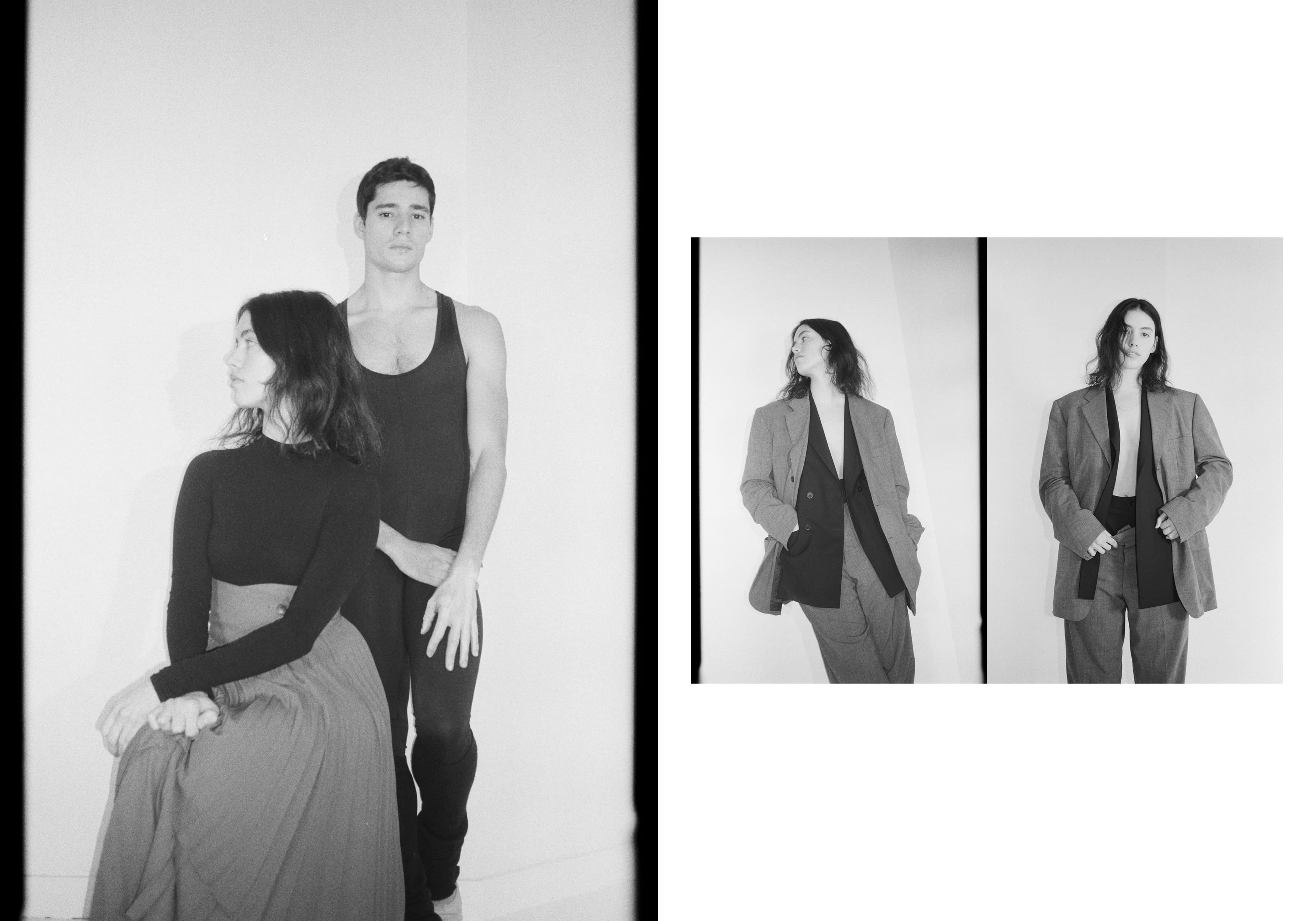
Left: Della Costa wears top by Commando. Skirt by Simonett. Right: Vintage jacket and pants by Prada. Jacket and pants, worn underneath, by Theory.
Artist: Nicole Della Costa
Medium: poetry
Place of Origin: Brazil
When I spoke to Nicole Della Costa, she had just gotten up and was sipping a coffee in bed in her apartment in New York City. Just like in her poetry, which is sparse, intentional, and impactful, she spoke thoughtfully and took her time to say what she meant. A year after releasing her book As Serious as a Hiccup, a collection of poetic journal entries consisting of everyday musings and briefings from herself and selected contributors, she’s come a long way from her earlier years working in a bookstore and holding secret poetry club meetings after business hours without telling her boss. However, the one constant quality of her work is the mission driving it: A community-oriented approach to making poetry, an art form that feels at times inaccessible, available and interactive for all.
Born in Rio de Janeiro, Della Costa moved to the United States at the age of eighteen and modeled and acted for a bit before finding that her true passion was writing. It gave her space to express what she couldn’t otherwise as she acclimated to living in a new country. “There was a time that I was living in New York and still had some issues with English,“ she recalls. “I was very shy and I wasn’t comfortable with the language yet. It takes a moment to adapt.“ However, between enrolling in poetry workshops and journaling constantly, Della Costa eventually realized that in her truest form, she is a poet. “I’ve always written and I’ve always kept notebooks,“ she reflects. “There were moments that I realized that I was a poet. Slowly, everything started to make sense—the format and how I was putting my words together in this world.“ It’s a crucial part of her identity, interweaving English and her native Portuguese in her projects.
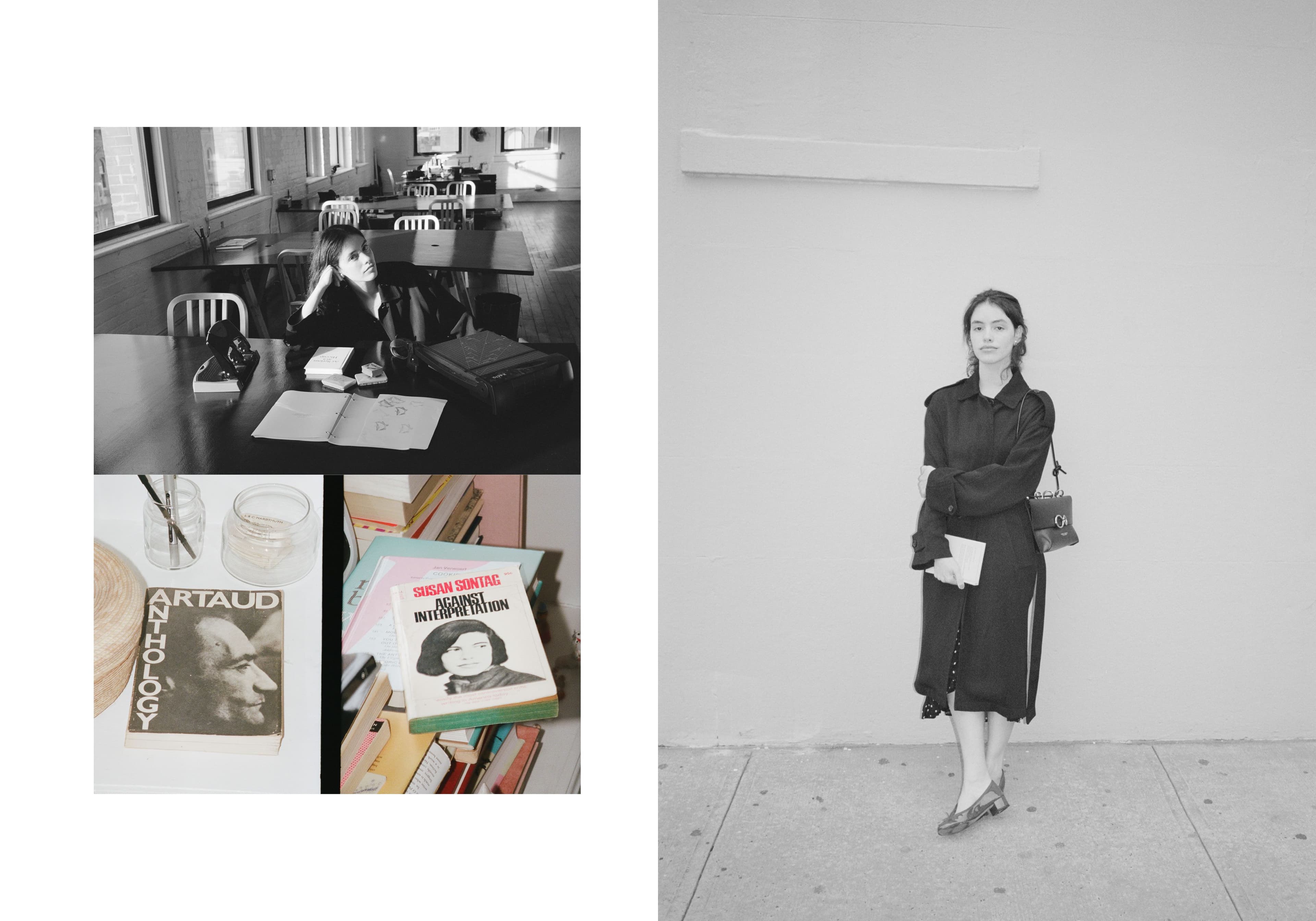
All clothing, Della Costa’s own
Along with this internal feeling, Della Costa received external validation too, from teachers and also from a fateful meeting with a psychic while passing through Rome on holiday in 2016. She exclaims, “I love going to psychics!“ and continues that this one in particular “was the one that told me you need to publish what you write. And I did! Then that was actually the first time that I published a chapbook. All because of her, I would say.“
Five years later, Della Costa began the Poetry Bank, an online exchange where creators and artists share works of poetry they connect with in order to further democratize the medium. “Every edition invites seven guests to recommend three poems,“ she explains. “That’s a way for other people to have a better introduction to poetry.“ Artists that have contributed to the Bank include Sonny Hall and Beck, who selected artists with similar visions. “I’m basically sharing my friends with other people,“ she admits. “I have had this relationship with a lot of friends of mine that we just exchange so much. I’m so grateful to have these relationships, sharing bonds with each other. I wanted to mimic this dynamic.“
Her collaborative work doesn’t end there though. As Serious as a Hiccup is filled with Della Costa’s entries but overflows with dispatches from other writers too. She stays involved, always on the lookout for what’s new in literature and poetry. She’s also worked closely with Gemma Janes on her organization sendb00ks, offering a subscription service for rare literature to be shared with people all over the world.
There’s a hyper-connectedness about Della Costa. She draws people in and embraces them, for she knows the power in sharing art: “There is no time to waste. My insecurities in the past wouldn’t make me move forward.“ She’s never lingered on what she is not. “It’s just not worth it.“
As a nonprofit arts and culture publication dedicated to educating, inspiring, and uplifting creatives, Cero Magazine depends on your donations to create stories like these. Please support our work here.
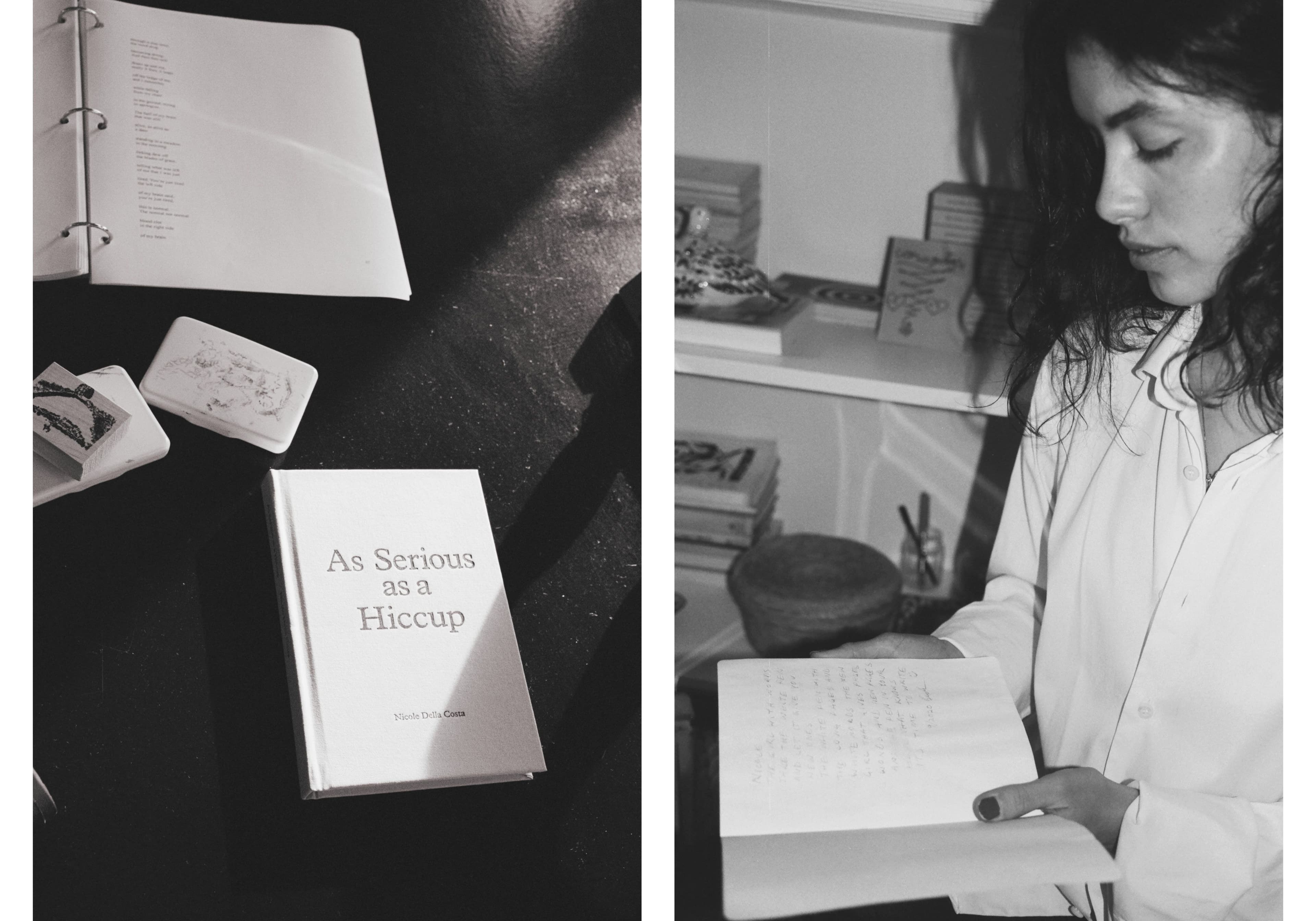
All clothing, Della Costa’s own
As a nonprofit arts and culture publication dedicated to educating, inspiring, and uplifting creatives, Cero Magazine depends on your donations to create stories like these. Please support our work here.
